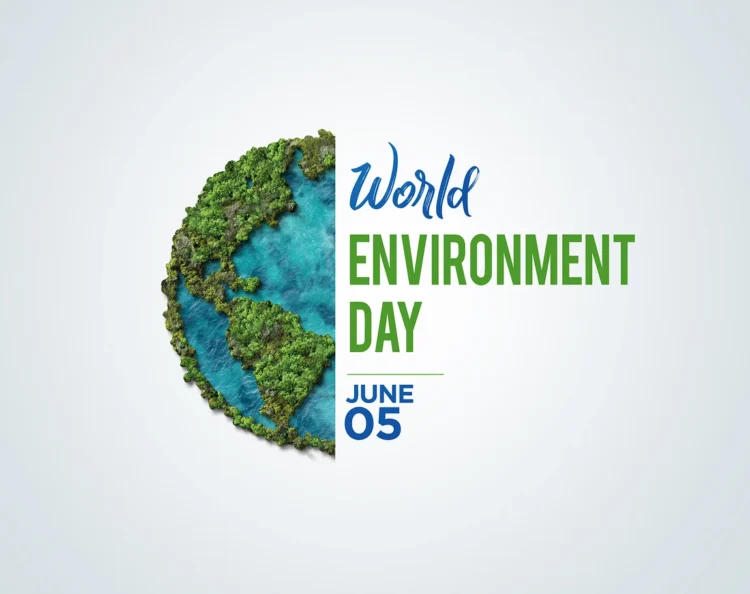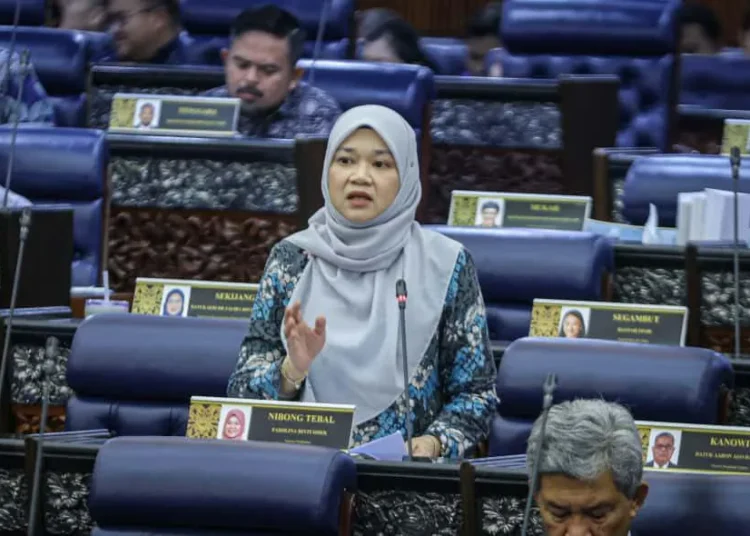Every year on June 5th, people around the world come together to celebrate World Environment Day, a day dedicated to raising awareness and taking action on pressing environmental issues. Together, we can make a difference by adopting sustainable habits, conserving resources, and promoting eco-friendly practices. Whether it’s planting trees, reducing waste, or supporting renewable energy, every small step counts.
During the 1972 Stockholm Conference, the United Nations General Assembly declared June 5 to be World Environment Day. It was the first world conference to make environmental protection a top priority. World Environment Day was observed for the first time in 1973. The first World Environment Day was held in 1973, with the theme ‘Only One Earth’.
World Environment Day is especially important in Malaysia, which is known for its lush rainforests, diversified ecosystems, and thriving biodiversity. Malaysians come together to commemorate this day, which serves as a painful reminder of the crucial significance of safeguarding and preserving our natural heritage.
World Environment Day 2024 “Land Restoration, Desertification, and Drought Resilience.”
World Environment Day’s theme for 2024 is “Land Restoration, Desertification, and Drought Resilience.” It is linked to restoring healthy land, preventing desertification, and managing water scarcity. Trees, healthy soil, and clean water are essential for a stable planet. When it comes to land restoration, there have lately been two reports of fallen trees in Malaysia’s Klang Valley during thunderstorms. Here are some solutions for addressing these interrelated challenges:
1. Sustainable Land Management Practices:
- Implementing sustainable land management strategies such as agroforestry, conservation agriculture, and rotational grazing can assist to rehabilitate degraded land, increase soil health, and reduce erosion.
- Reforestation and afforestation activities can help to increase vegetation cover, improve biodiversity, and reduce desertification by stabilizing soils and lowering the risk of land degradation.
- By offering incentives to landowners, farmers, and communities, we may encourage the adoption of sustainable land use practices and promote long-term stewardship of our natural resources.
2. Water Management and Conservation:
- Efficient water management practices, such as rainwater collecting, drip irrigation, and water recycling, can help to preserve water and boost drought resilience.
- Investing in the upkeep and renovation of water infrastructure, such as reservoirs, irrigation systems, and groundwater recharge facilities, can help to assure consistent access to water for agriculture, livestock, and humans.
- Promoting drought-resistant crops and water-saving crop varieties can assist to alleviate the effects of drought on agricultural production and food security.
3. Soil Conservation and Restoration:
- Terracing, contour plowing, and cover cropping are examples of soil conservation practices that can assist reduce erosion, improve soil fertility, and aid the restoration of damaged land.
- Encouraging the use of organic farming practices and soil additions like compost and biochar can improve soil structure, boost water retention, and promote plant development.
- Restoring degraded soils with practices like soil rehabilitation, re-vegetation, and land reclamation can assist to regenerate ecosystems, increase biodiversity, and improve carbon sequestration.
4. Community Engagement and Capacity Building:
- Engaging local communities and stakeholders in the planning, execution, and monitoring of land restoration and conservation initiatives helps develop a sense of ownership and stewardship.
- Training, technical support, and capacity-building initiatives for farmers, landowners, and community groups can help them improve their knowledge and abilities in sustainable land management methods.
- Facilitating knowledge sharing and peer-to-peer learning networks can aid in the adoption of best practices and novel solutions for land restoration, desertification management, and drought resilience.
Number of Active Go Green Campaign in Malaysia :
- My Save Our Sungai (MySOS)
SOS Selangor is an organization of non-governmental organizations (NGOs) and individuals concerned about the social and economic implications of dams and harmful river development in general, and the Sg.Selangor project specifically. It began in 2000 as a volunteer group to resist the Sg.Selangor Dam and is now involved in monitoring and distributing information about river development and water-related projects.
Website : MySOS
- Green Earth Movement (GEM)
GEM is a non-profit organization located in Malaysia that promotes environmental conservation and sustainability through activities such as tree planting, beach cleanups, and educational programs.
To know more : GEM
- EcoKnights
EcoKnights is a Malaysian environmental NGO that undertakes a variety of initiatives and campaigns aimed at promoting sustainable development, environmental education, and community empowerment. Their projects include the Kuala Lumpur Eco Film Festival and a variety of environmental education programmes.
Website : Ecoknights
- Malaysian Green Technology Corporation (MGTC):
MGTC is a government agency under the Ministry of Science, Technology, and Innovation (MOSTI) that promotes the use of green technology and sustainable practices in Malaysia through a variety of initiatives such as awareness campaigns, capacity building programs, and funding for green projects.
Website : MGTC
- #JomJagaBumi Campaign
The Malaysian Youth Parliament launched the #JomJagaBumi (Let’s Take Care of the Earth) social media campaign to support environmental conservation and sustainability among Malaysia’s youth. The program promotes eco-friendly habits and urges people to take action to help the environment.
Website : myhijau
Nurturing Our Planet for Future Generations
The environment, which includes the air we breathe, the water we drink, the land we live on, and the diverse living beings that share our planet, is the basic cornerstone of human existence. Its significance cannot be emphasized, as it supports all life on Earth and supplies the critical resources and ecosystem services on which human well-being is based. From the air we breathe to the food we consume, everything in our life is inextricably linked to the health and vitality of the environment. Parents play an important influence in molding their children’s attitudes, values, and actions, especially attitudes toward the environment.
Here are a few ways parents can raise awareness among future generations about the need of environmental preservation:
1. Lead by Example:
- Incorporate environmentally beneficial habits and behaviors into your daily life, such as recycling, conserving energy and water, decreasing trash, and purchasing eco-friendly items.
- Involve your children in domestic tasks and environmental conservation activities like gardening, composting, and meal planning using sustainable ingredients.
2. Teach Through Experience:
- Take your children outside to discover nature’s beauty and diversity. Visit parks, nature reserves, botanical gardens, and wildlife sanctuaries to learn about the local ecosystems and fauna.
- Outdoor activities, such as hiking, camping, birdwatching, and nature walks, can help to build a sense of wonder and curiosity about the environment.
3. Foster Environmental Awareness:
- Initiate age-appropriate conversations with your children about environmental challenges including climate change, pollution, deforestation, and habitat loss.
- Use teachable opportunities, such as watching documentaries, reading books, or talking about news stories, to promote awareness and stimulate critical thinking about environmental issues and solutions.
4. Encourage Sustainable Practices:
- Encourage your children to participate in family decisions and behaviors that encourage sustainability, such as eliminating single-use plastics, conserving water, using energy-efficient equipment, and supporting local and organic products.
- Teach your children about the value of recycling, composting, and trash reduction, and get them involved in sorting and recycling household items.
5. Support Environmental Education:
- Advocate for environmental education in schools and community programs, as well as projects that encourage outdoor learning, environmental literacy, and hands-on encounters with nature.
- To help your children better comprehend environmental ideas and challenges, supplement formal schooling with informal learning opportunities such as visits to museums, science centers, botanical gardens, and nature centers.
World Environment Day is a poignant reminder of the critical need for collaborative action to address the environmental challenges confronting our planet. Every year on June 5th, we are reminded of the crucial need of preserving and protecting our natural world for future generations. By raising awareness, encouraging sustainable practices, and pushing for significant change, we can all help to create a more resilient and harmonious connection with the environment. Let us reaffirm our commitment to stewardship and sustainability, and work together to create a greener, healthier, and more sustainable future for everyone.
Every breath we take, every drop we drink, and every step we make connects us to the environment. Let’s cherish and protect it as our most precious treasure. 🌱💧 #PreserveAndValue!
Follow us on Instagram, Facebook or Telegram for more updates and breaking news.







